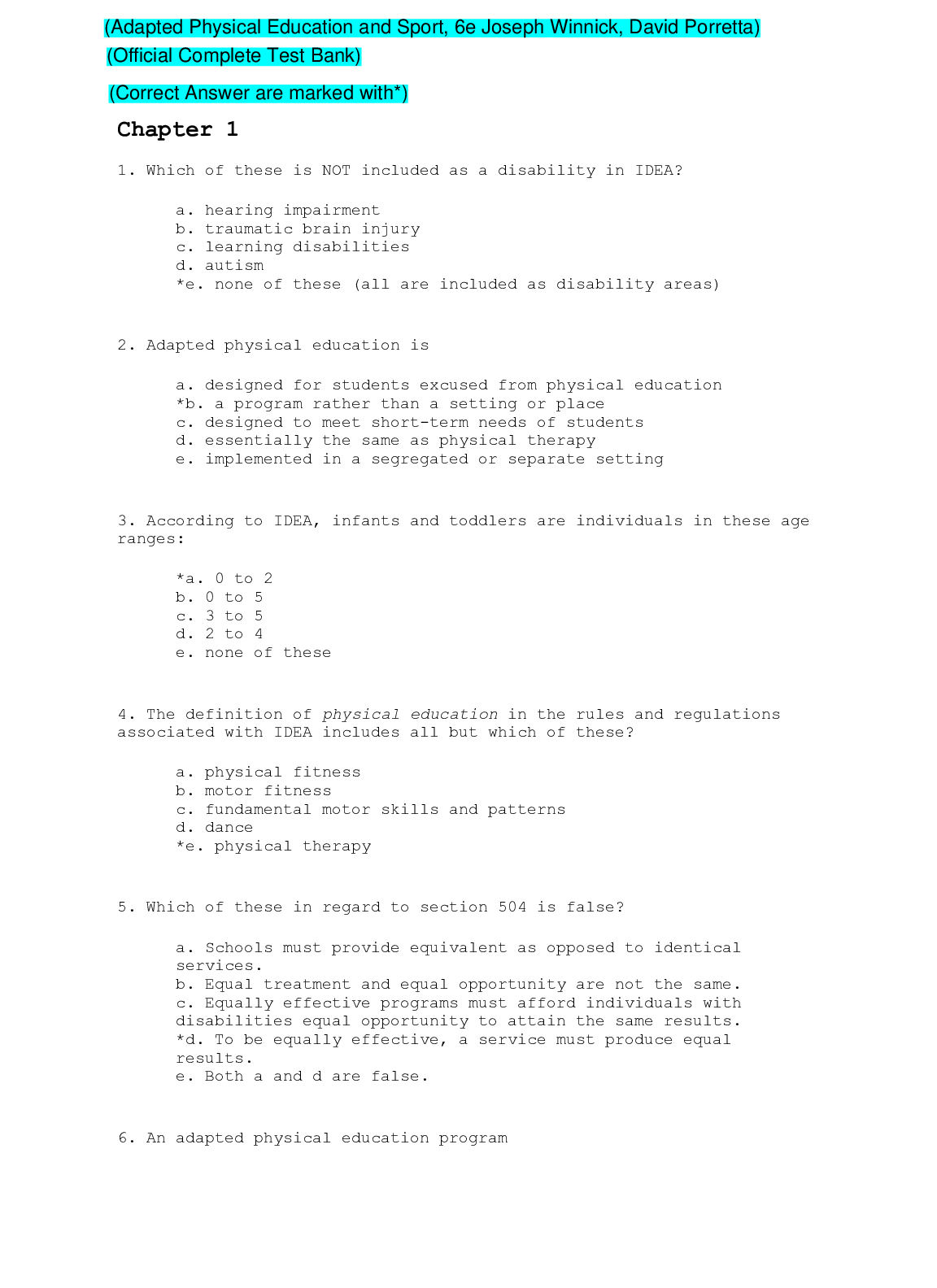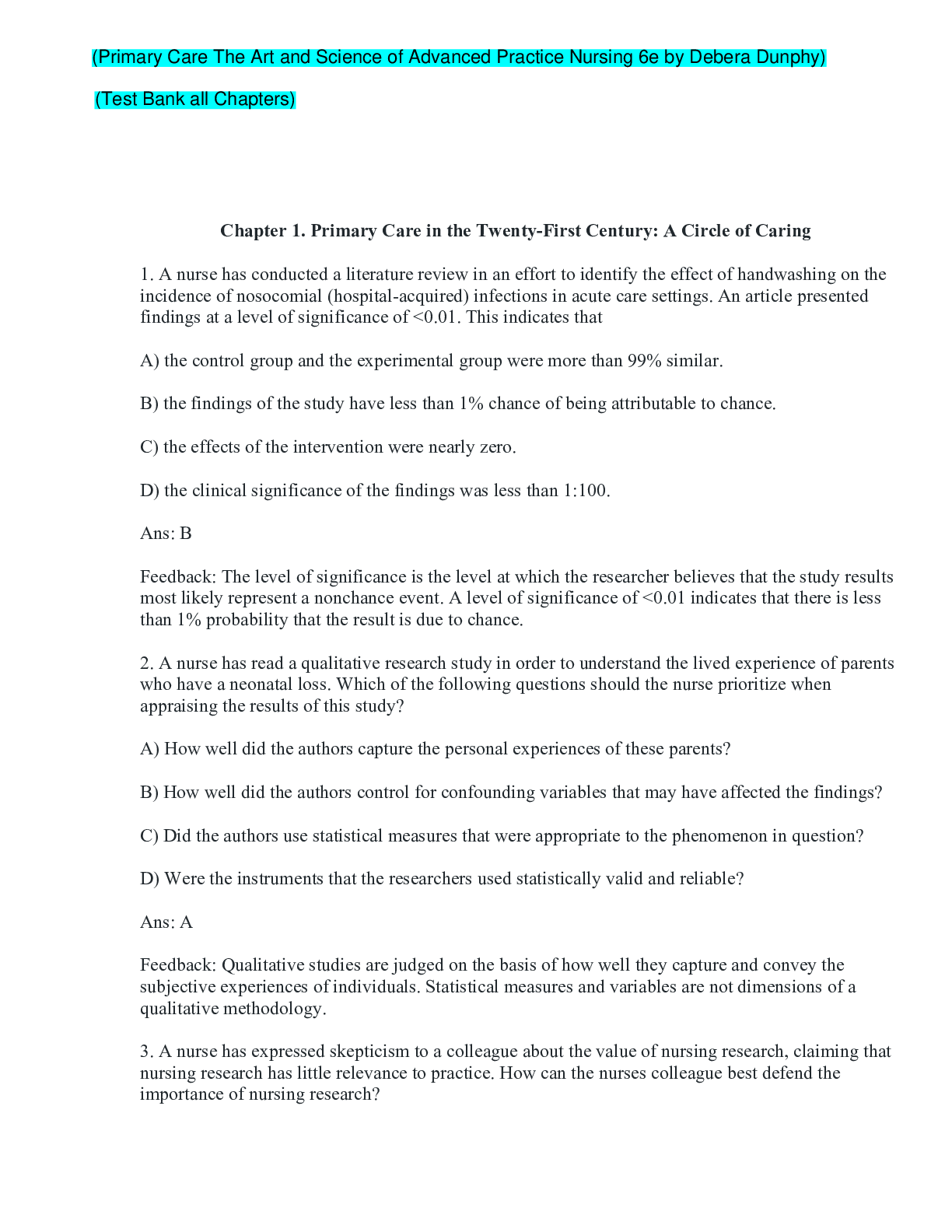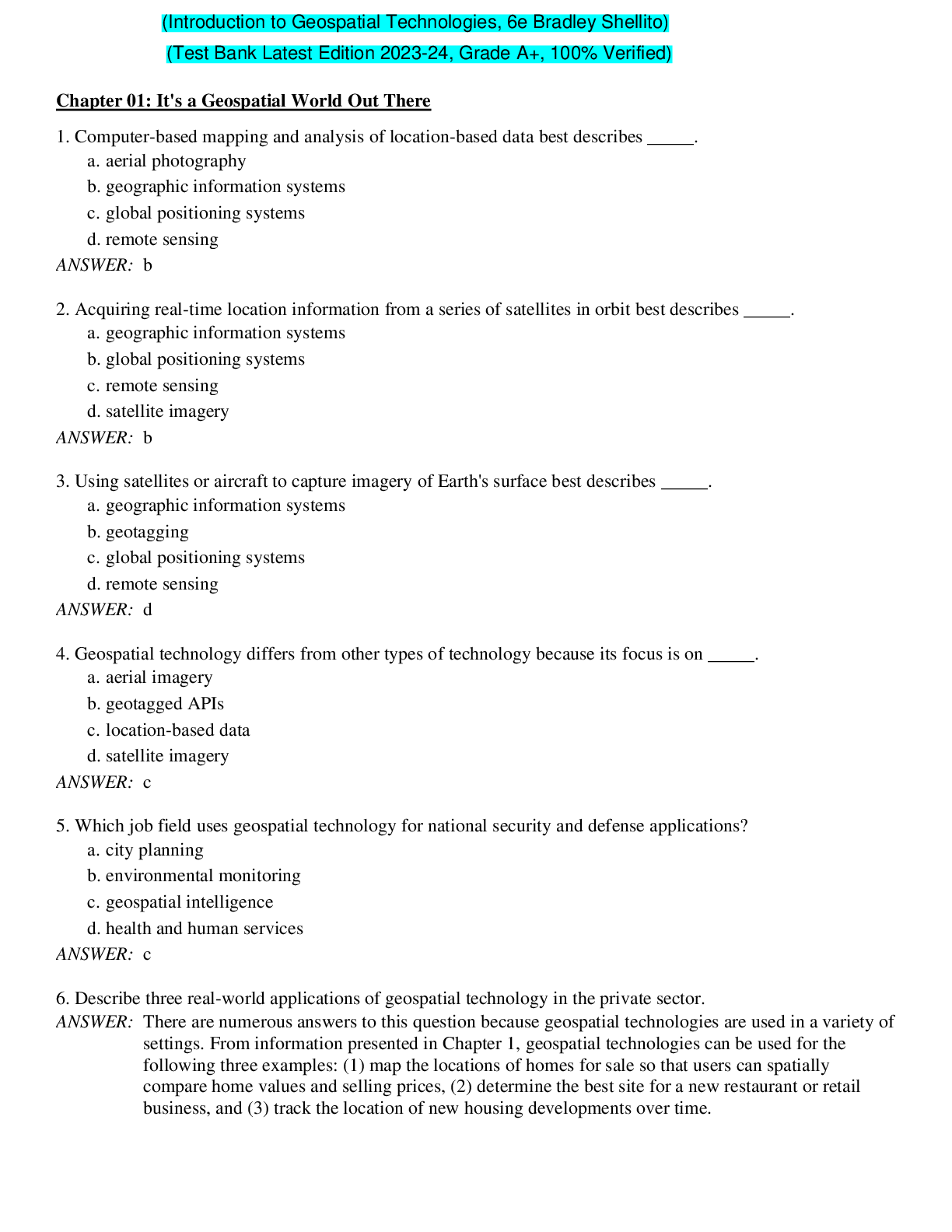*NURSING > TEST BANK > Test Bank for Nutritional Foundations and Clinical Application: A Nursing Approach, 6th Edition by G (All)
Test Bank for Nutritional Foundations and Clinical Application: A Nursing Approach, 6th Edition by Grodner, Escott-stump, and Dorner [Complete Test Bank]
Document Content and Description Below
Test Bank for Nutritional Foundations and Clinical Applications 6th Edition by Grodner Table of Contents PART I: Wellness, Nutrition, and the Nursing Role 1. Wellness Nutrition 2. Personal and Communi... ty Nutrition PART II: Nutrients, Food, and Health 3. Digestion, Absorption, and Metabolism 4. Carbohydrates 5. Fats 6. Protein 7. Vitamins 8. Water and Minerals PART III: Health Promotion through Nutrition and Nursing Practice 9. Energy, Weight and Fitness 10. Nutrition across the Life Span PART IV: Overview of Medical Nutrition Therapy 11. Nutrition Assessment and Patient Care 12. Food-Related Issues 13. Nutrition for Disorders of the Gastrointestinal Tract 14. Nutrition for Disorders of the Liver, Gallbladder, and Pancreas 15. Nutrition for Diabetes Mellitus 16. Nutrition in Metabolic Stress: Burns, Trauma, and Surgery 17. Nutrition for Cardiopulmonary Disease 18. Nutrition for Diseases of the Kidneys 19. Nutrition for Neuro-Psychiatric Disorders 20. Nutrition in Cancer and HIV-AIDS Nutritional Fou S nt u d v ai a t . i c o om n s - T a h n e d M C ar l k i e nt p i cl a a ce l A to pB u p y li a c n a d t S i o el n l y s o 7 ur th Stu E d dy i M t i a ot e n ria Gl rodner Test Bank Chapter 01: Wellness Nutrition Grodner et al.: Nutritional Foundations and Clinical Applications: A NursingApproach, 6th Edition MULTIPLE CHOICE 1. Examples of informal education include a. attending a workshop on coronary artery disease sponsored by the American Heart Association. b. watching a television show about diabetes. c. learning about food safety techniques in a high school economics course. d. joining a support group to help overcome an eating disorder. ANS: B Watching a television show about diabetes is an example of informal education because it is an experience that occurs through a daily activity. Attending a workshop or joining a support group would be considered nonformal education; a high school course would be considered formal education. DIF: Cognitive Level: Applying REF: Page 13 TOP: Nursing Process: Implementation MSC: Client Needs: Health Promotion and Maintenance 2. A college student exercises regularly and generally eats a healthy variety of foods, is taking a course in general nutrition, buys locally produced food whenever possible, is an active member of an on-campus faith-based organization, and keeps a journal to help process her emotions. What else could beNimRportIantGfor Bhe.rCto inMclude in her life in order to develop her overall wellness? U S N T O a. Growing some of her own food NURSINGTB.COM Nutritional Fou S nt u d v ai a t . i c o om n s - T a h n e d M C ar l k i e nt p i cl a a ce l A to pB u p y li a c n a d t S i o el n l y s o 7 ur th Stu E d dy i M t i a ot e n ria Gl rodner Test Bank b. Keeping a food record to help evaluate what she eats c. Eating meals with friends throughout the week d. Meeting with a registered dietitian to review her food choices ANS: C Wellness enhances a person’s level of health through development of each of the six dimensions of health: physical health, intellectual health, emotional health, social health, spiritual health, and environmental health. Exercise and eating a healthy variety of foods help develop physical health; taking a course in general nutrition helps develop intellectual health; buying locally produced food helps develop environmental health; being part of a faith-based organization helps develop spiritual health; and keeping a journal helps develop emotional health. The missing dimension in this example is development of social health; eating meals with friends throughout the week would add this dimension. Growing her own food would be another example of environmental health; keeping a food record would be another contributor to physical health; and meeting with a registered dietitian may contribute to physical, intellectual, and emotional health. DIF: Cognitive Level: Analyzing REF: Page 7 | Page 8 TOP: Nursing Process: Assessment MSC: Client Needs: Health Promotion and Maintenance 3. For a client who is missing meals because of poor planning or is too busy to eat, emotional health can be affected by , which can cause confusion or anxiety. NURSINGTB.COM Nutritional Fou S nt u d v ai a t . i c o om n s - T a h n e d M C ar l k i e nt p i cl a a ce l A to pB u p y li a c n a d t S i o el n l y s o 7 ur th Stu E d dy i M t i a ot e n ria Gl rodner Test Bank a. low blood sugar levels b. high blood sugar levels c. high blood pressure d. extremely low blood pressure ANS: A Poor eating habits affect emotional health. Missing meals may cause blood sugar levels to decrease, which can cause anxiety or confusion or make difficult to control emotions. Late night binges on snack food are likely to result in excessive energy intake but would have a less direct effect on emotional health. Eating small meals throughout the day is likely to maintain more constant blood sugar levels, which would actually have a positive effect on emotional health. Excessive caffeine consumption may contribute to anxiety, but 2 cups of caffeinated coffee is not considered excessive. DIF: Cognitive Level: Analyzing REF: Page 6 TOP: Nursing Process: Assessment MSC: Client Needs: Psychosocial Integrity 4. The best example of the type of concern that is likely to be addressed by the U.S. Department of Health and Human Services when target goals for Healthy People 2030 are updated is a. preference for vegetarian eating patterns among white women. b. low intake of fruits and vegetables by African American children. c. widespread use of bottled water in higher socioeconomic groups. d. common use of protein and vitamin supplements in athletes. ANS: B Healthy People is used to set targets for health promotion to improve the health of all individuals. It addresses environmental and social issues that affect health outcomes. Low intake of fruits and vegetableNs UbyRASfIriNcaGn TABCicOanMchildren is likely to have an adverse NURSINGTB.COM Nutritional Fou S nt u d v ai a t . i c o om n s - T a h n e d M C ar l k i e nt p i cl a a ce l A to pB u p y li a c n a d t S i o el n l y s o 7 ur th Stu E d dy i M t i a ot e n ria Gl rodner Test Bank effect on their health and so may be addressed when target goals are set. Vegetarian eating patterns, use of bottled water, and use of protein and vitamin supplements do not necessarily have an adverse effect on nutritional health and so are less likely to be addressed. DIF: Cognitive Level: Applying REF: Page 9 | Page 10 TOP: Nursing Process: Planning MSC: Client Needs: Health Promotion and Maintenance 5. An example of community support for health promotion is a. teaching a young mother skills in safe food preparation. b. watching a television documentary about industry errors in food processing. c. labeling fresh poultry packages with information about proper food storage. d. being aware that Salmonella can be transmitted because of inadequate food preparation. ANS: C Food labeling information is an example of community support because it is a regulatory measure that supports new health-promoting behaviors within a social context. Teaching, watching television, and awareness may increase knowledge, but they do not alter the social context by regulation or environmental change. DIF: Cognitive Level: Applying REF: Page 8 TOP: Nursing Process: Implementation MSC: Client Needs: Health Promotion and Maintenance 6. An example of a technique for health promotion is NURSINGTB.COM Nutritional Fou S nt u d v ai a t . i c o om n s - T a h n e d M C ar l k i e nt p i cl a a ce l A to pB u p y li a c n a d t S i o el n l y s o 7 ur th Stu E d dy i M t i a ot e n ria Gl rodner Test Bank a. exercising five times a week. b. local supermarkets’ expanding the availability of fresh fruits and vegetables. c. teaching a teenager how to choose healthier foods at fast-food restaurants. d. information about the relationship of dietary intake and diet-related disorders. ANS: C Health promotion consists of strategies that are designed to improve the health of individuals, families, groups, and communities, such as teaching a teenager how to choose healthier fast foods. Exercising regularly contributes to wellness, but it is not bringing about a change in health unless this is a change in behavior. Stocking a wider availability of fresh produce does not promote health, unless the supermarket uses specific strategies to encourage consumption. Information about the relationship between nutrients and disease is simply information unless it is used to promote behavior change. DIF: Cognitive Level: Applying REF: Page 7 | Page 8 TOP: Nursing Process: Implementation MSC: Client Needs: Health Promotion and Maintenance 7. For the efficient functioning and maintenance of the body, a person needs to consume sufficient amounts of a. fiber. b. nutrients. c. minerals. d. supplements. ANS: B The body needs sufficient amounts of all nutrients for efficient functioning and maintenance. Both fiber and minerals are needed, but each represents only one type of nutrient. [Show More]
Last updated: 1 year ago
Preview 1 out of 218 pages
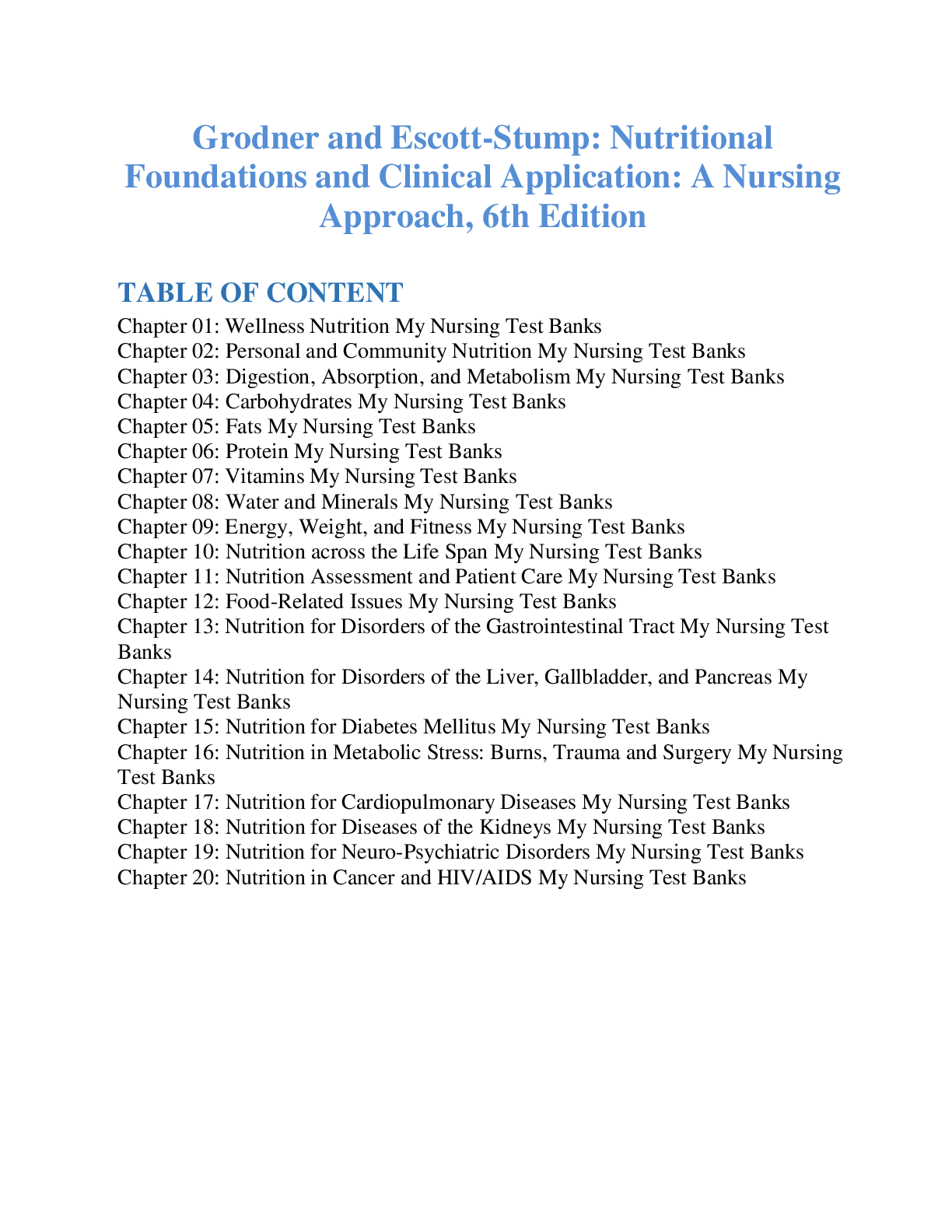
Reviews( 0 )
Document information
Connected school, study & course
About the document
Uploaded On
Aug 23, 2022
Number of pages
218
Written in
Additional information
This document has been written for:
Uploaded
Aug 23, 2022
Downloads
0
Views
38


.png)
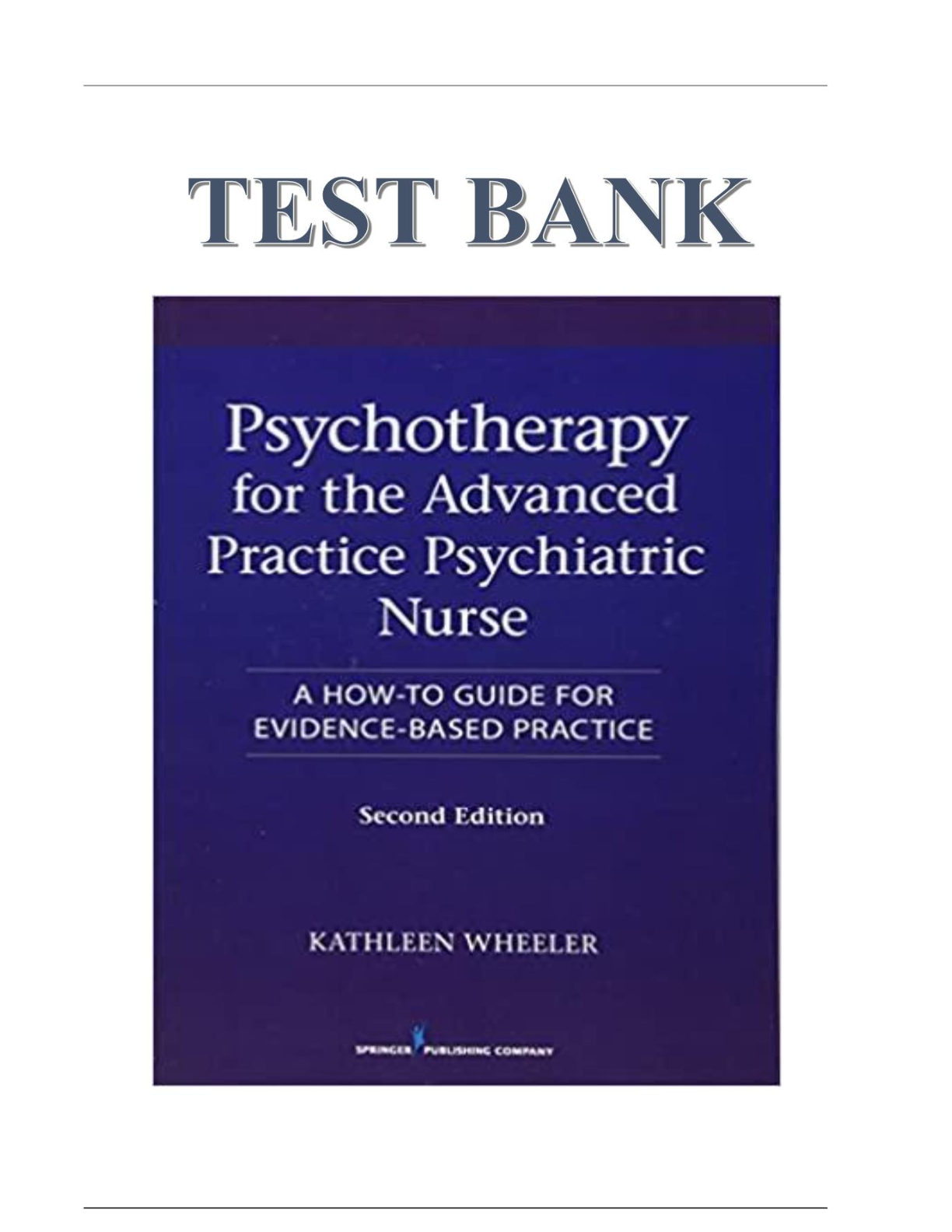
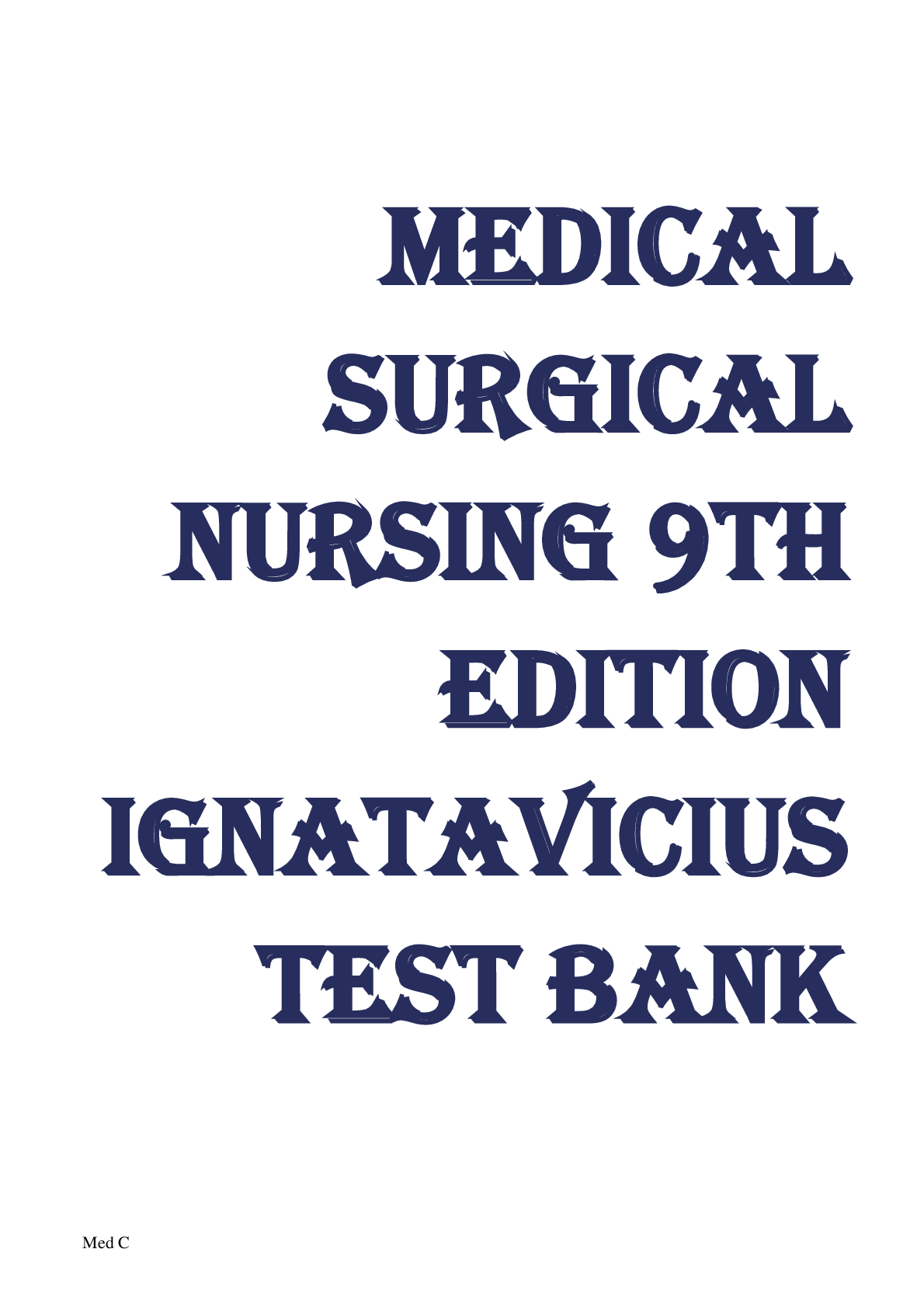
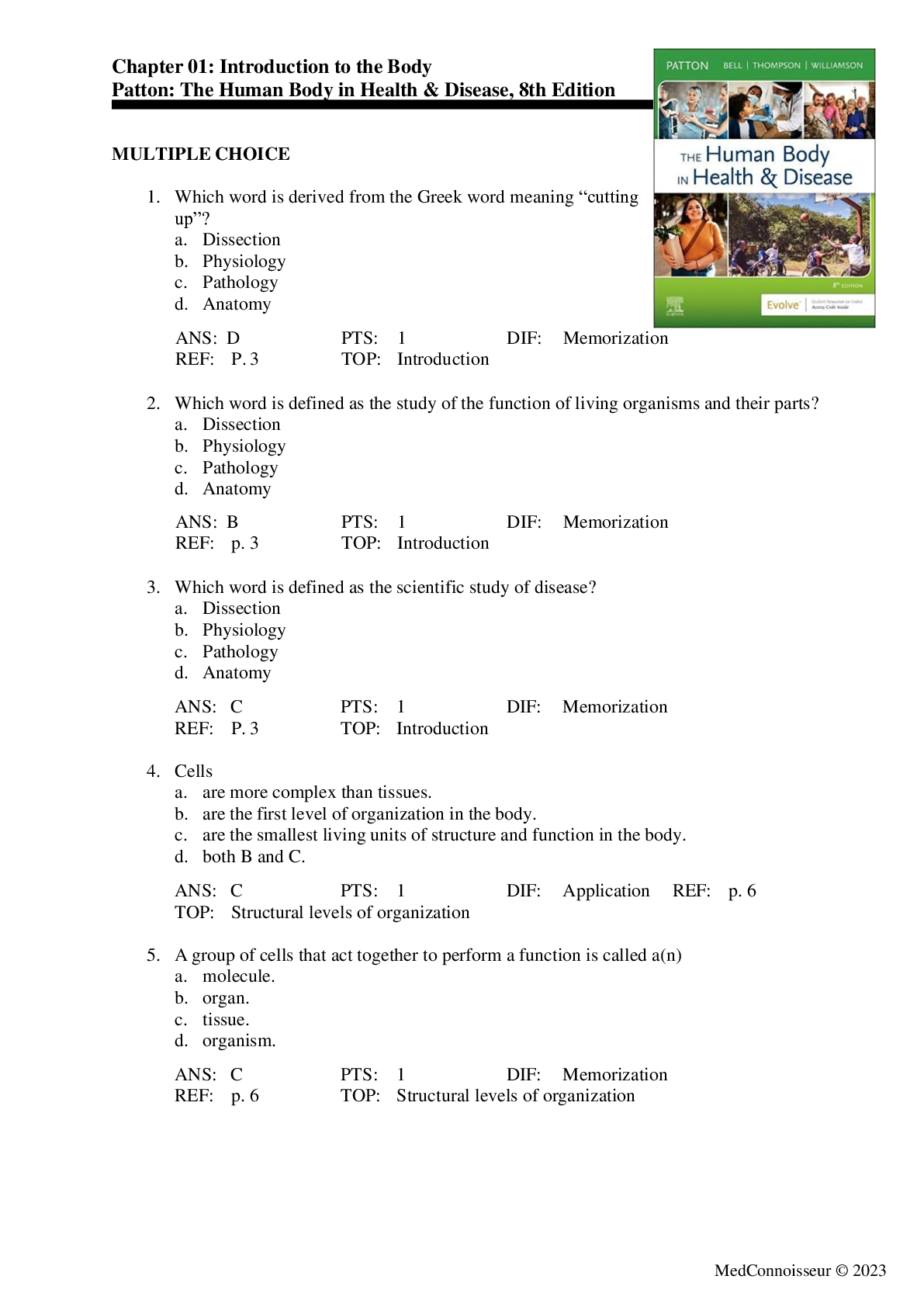
.png)
.png)
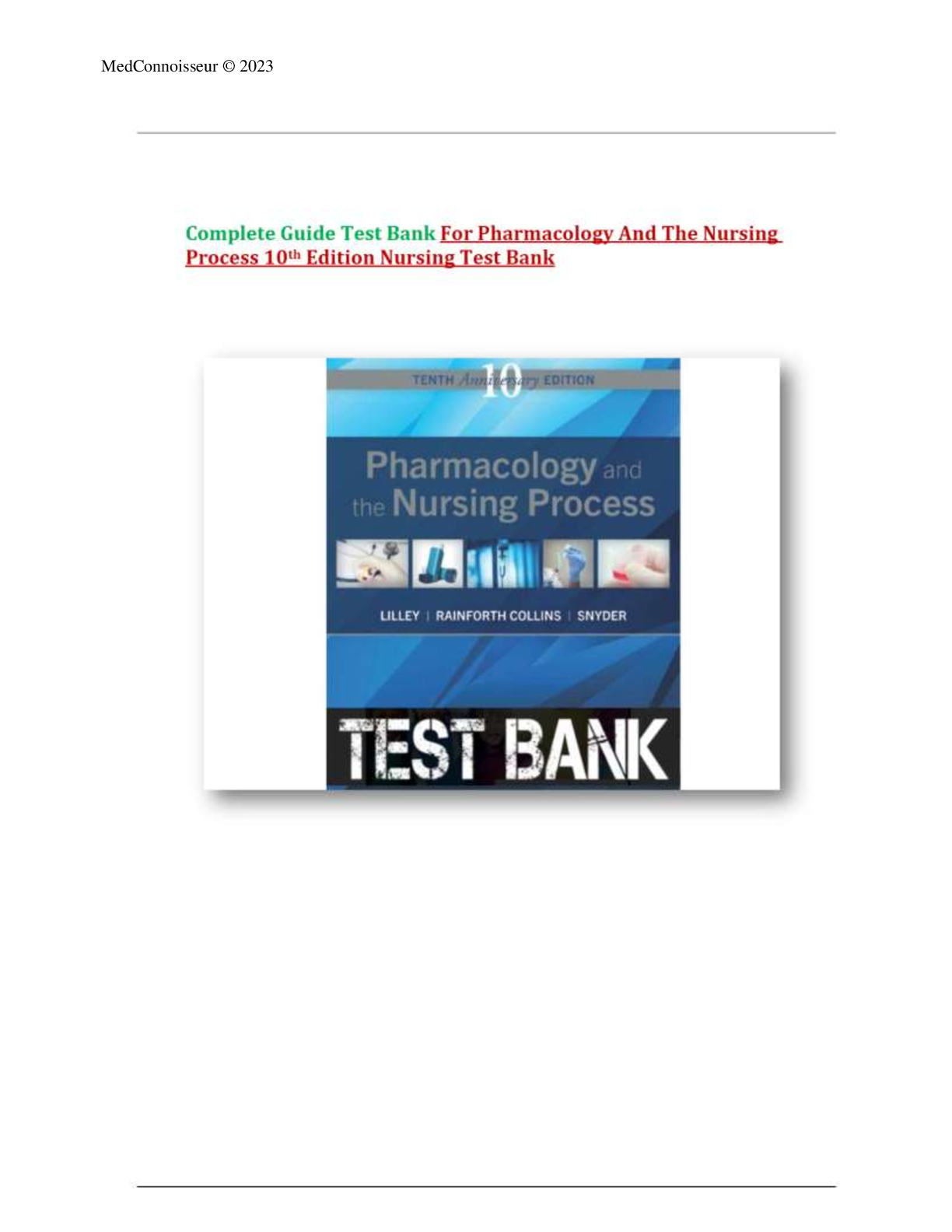



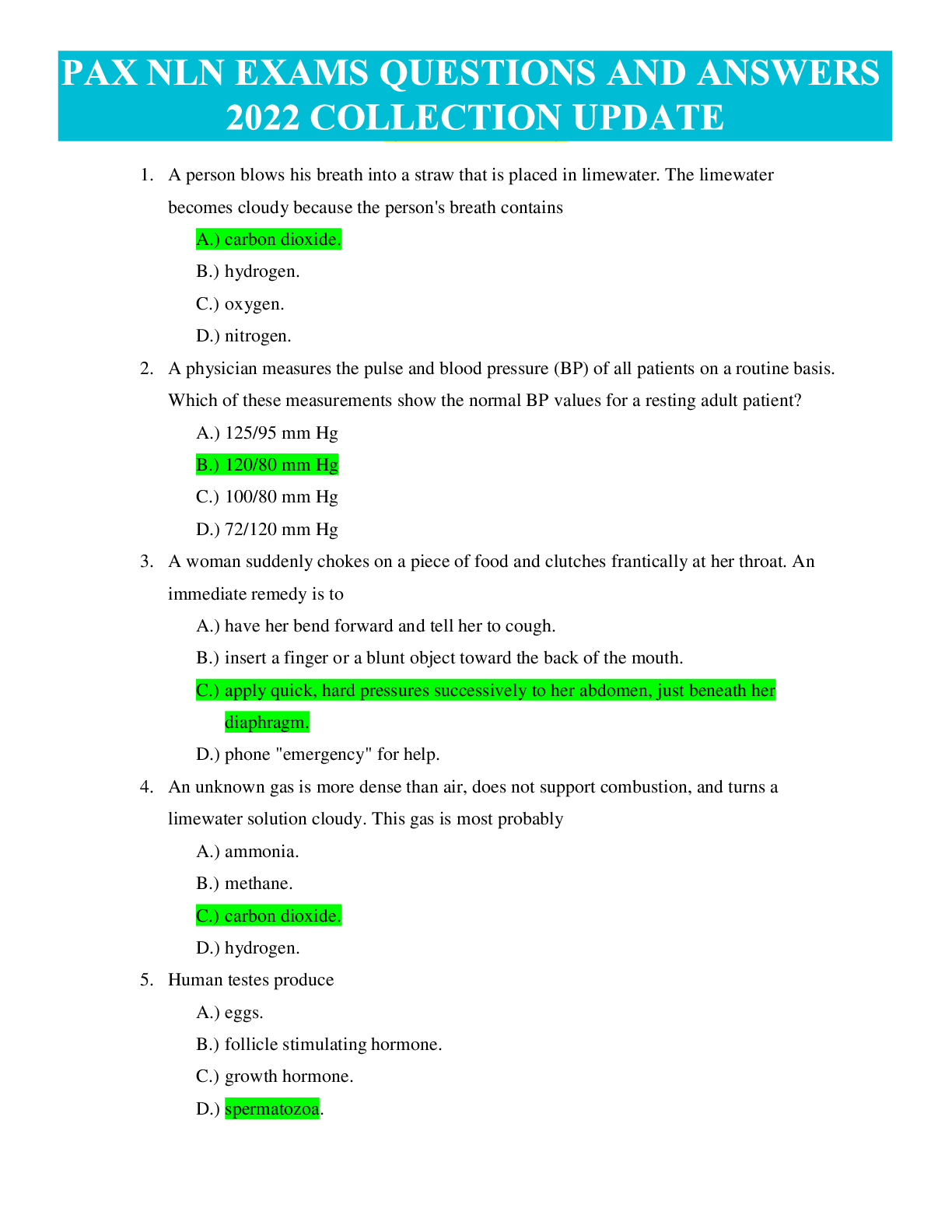

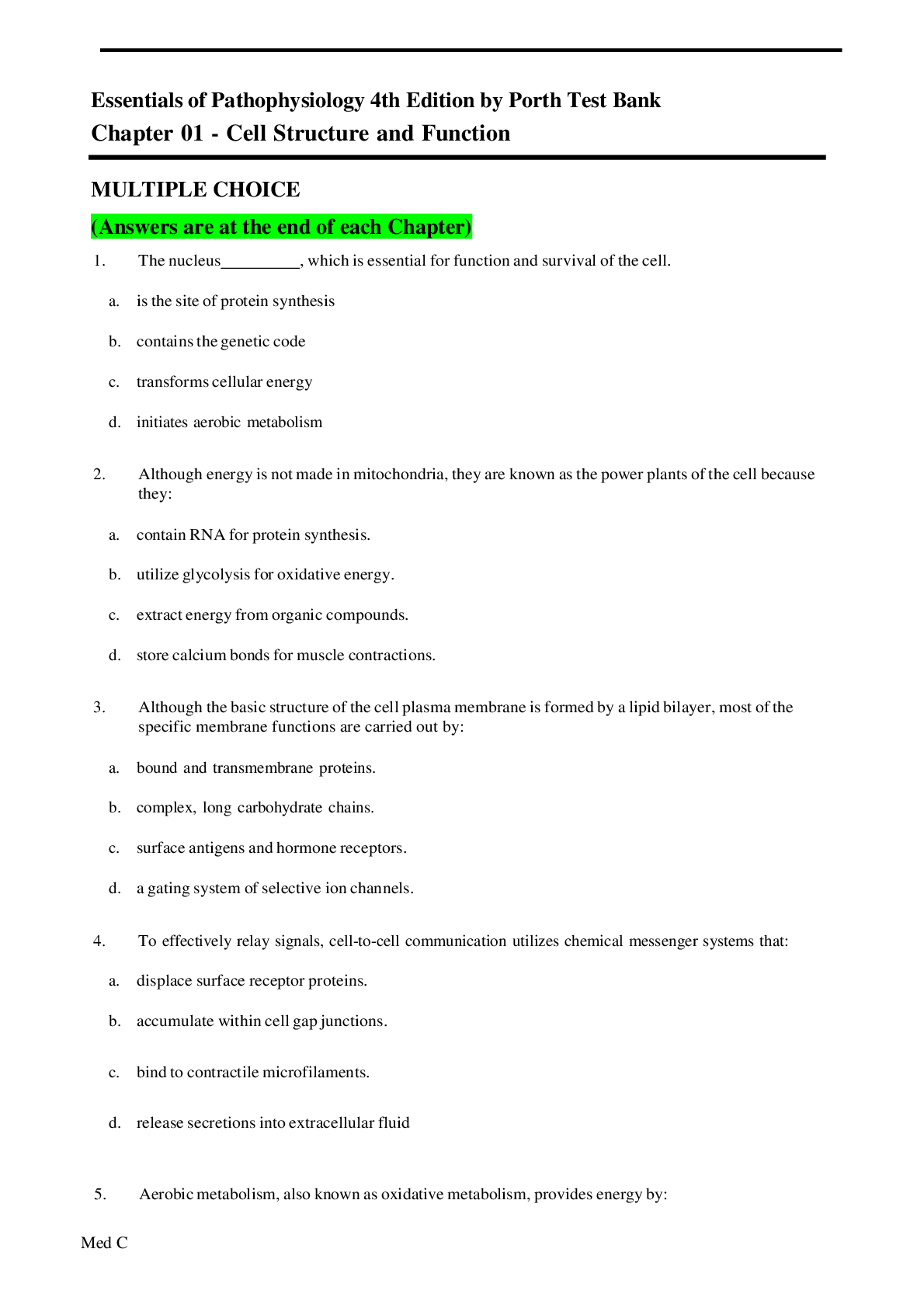
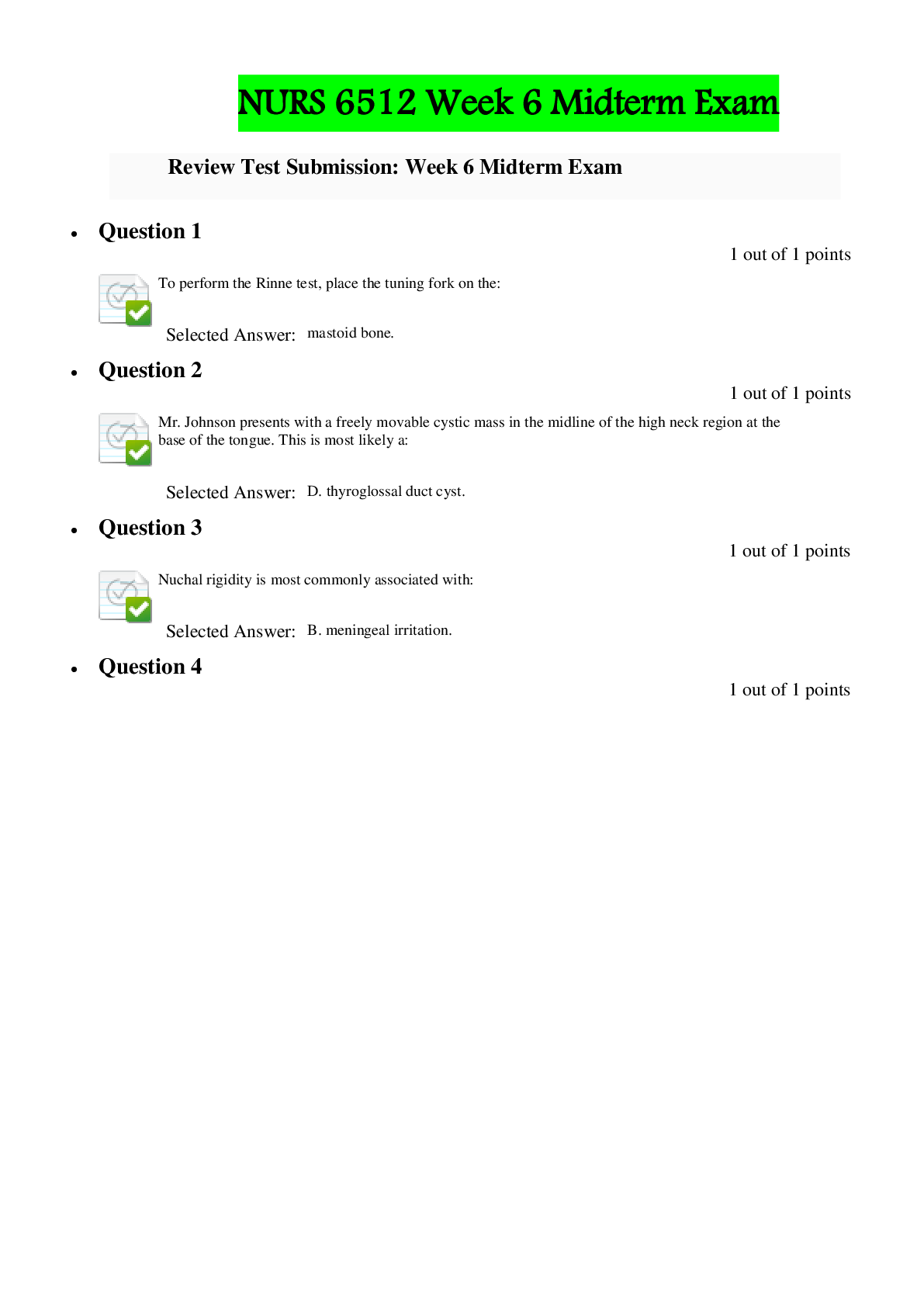
.png)

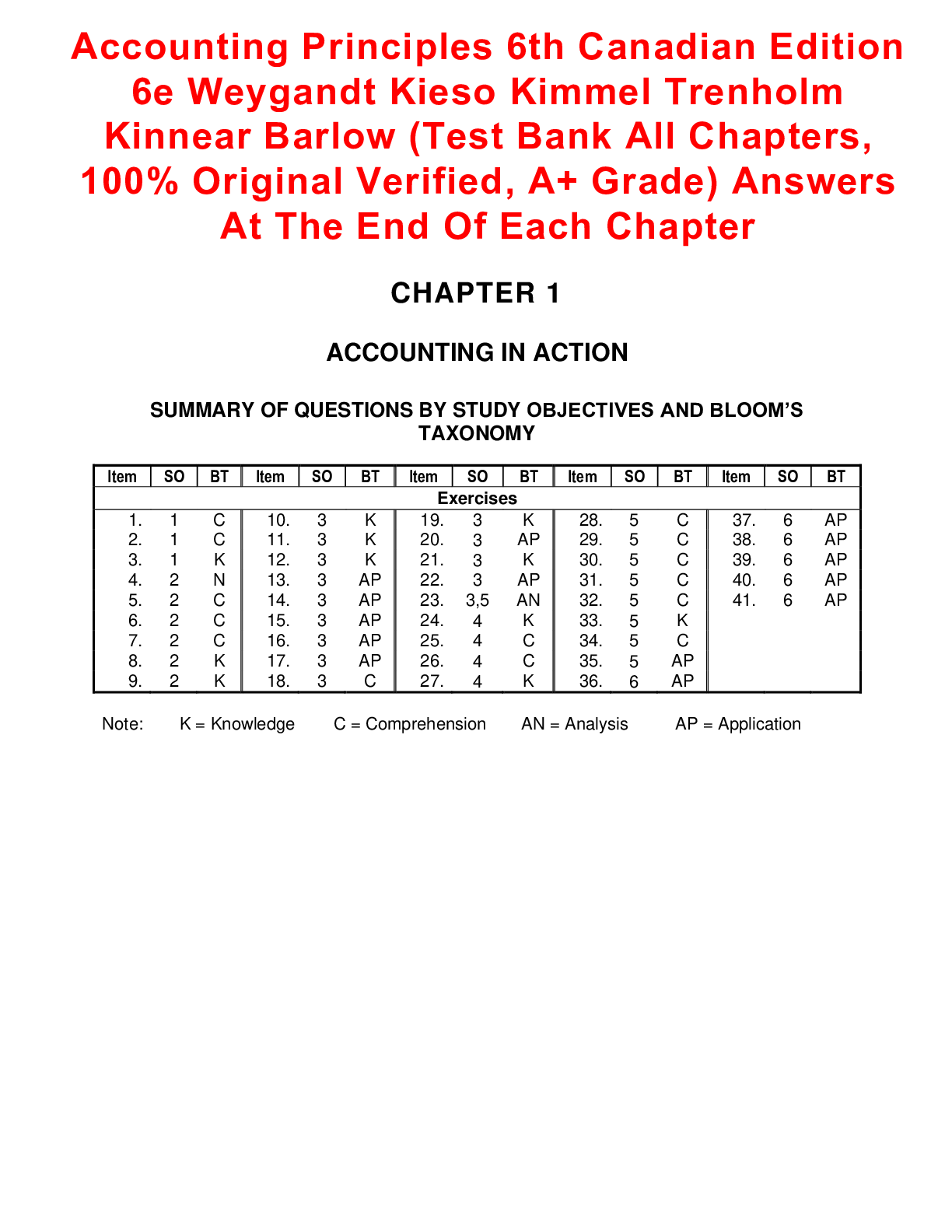
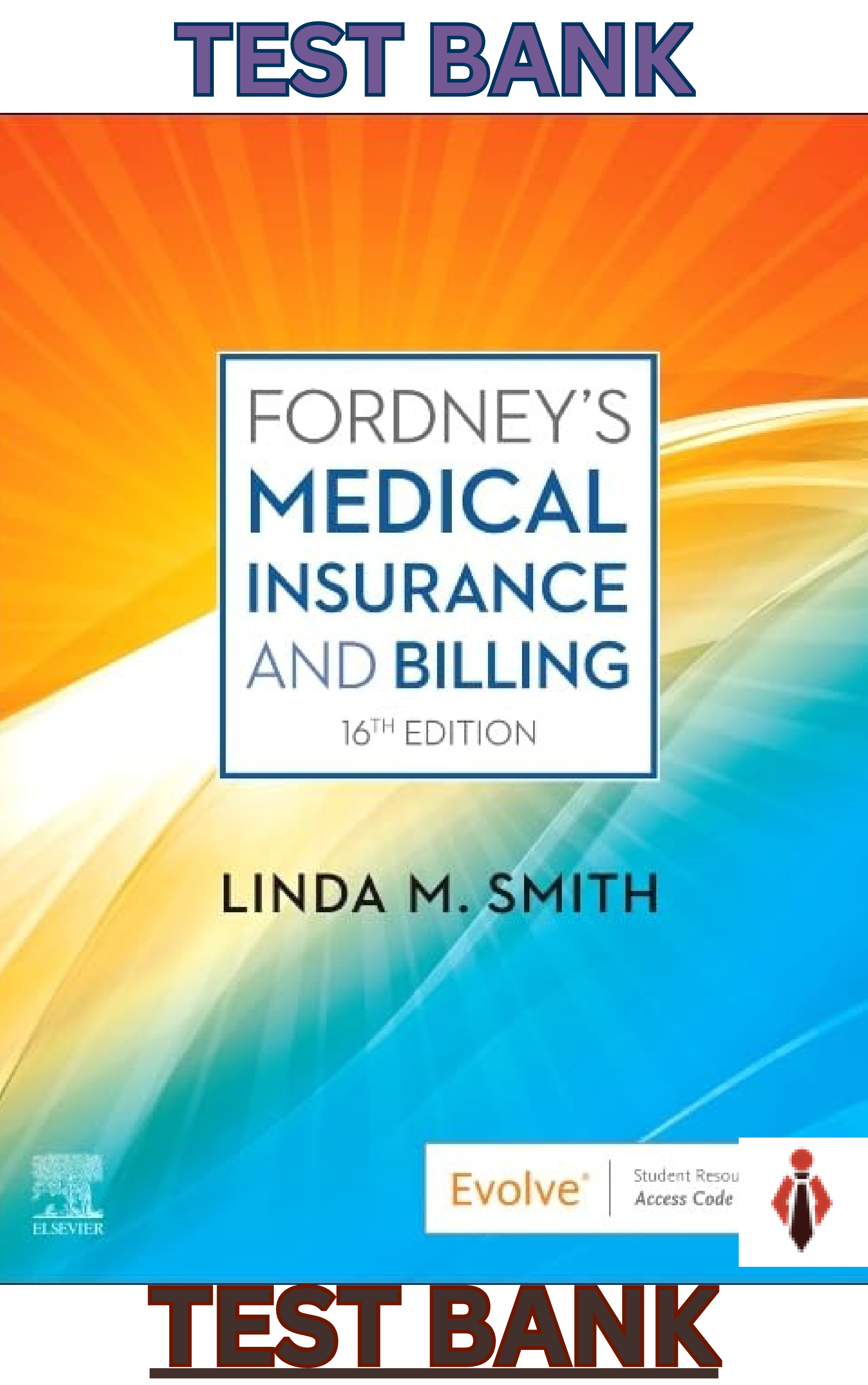

.png)







